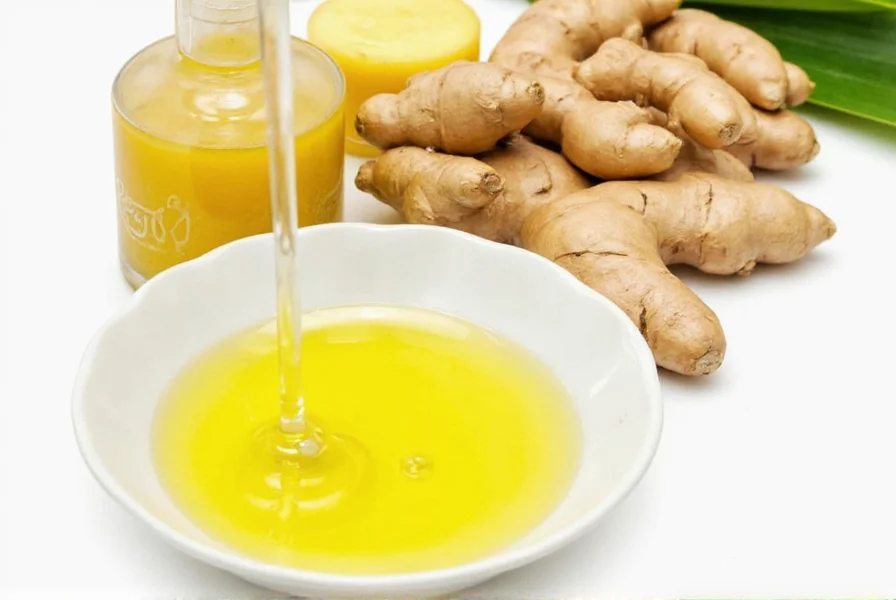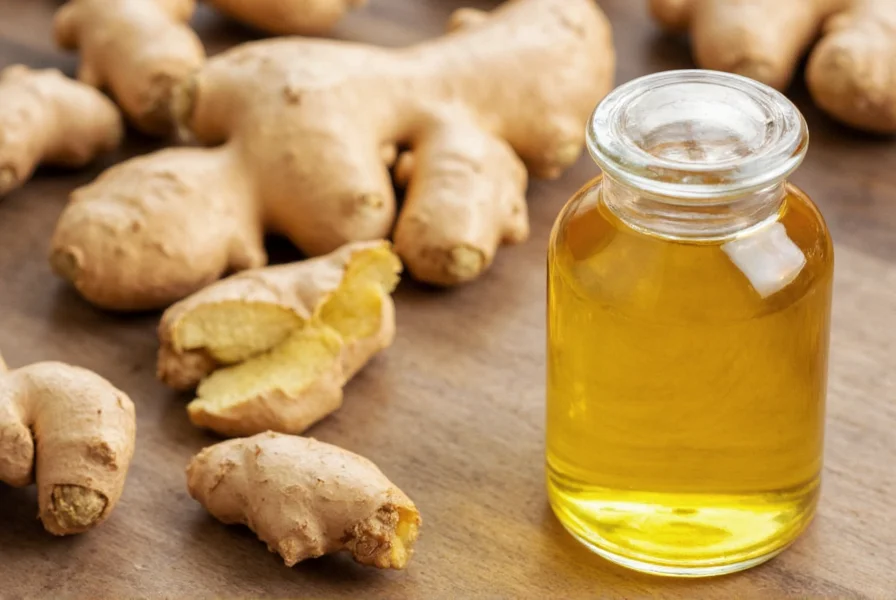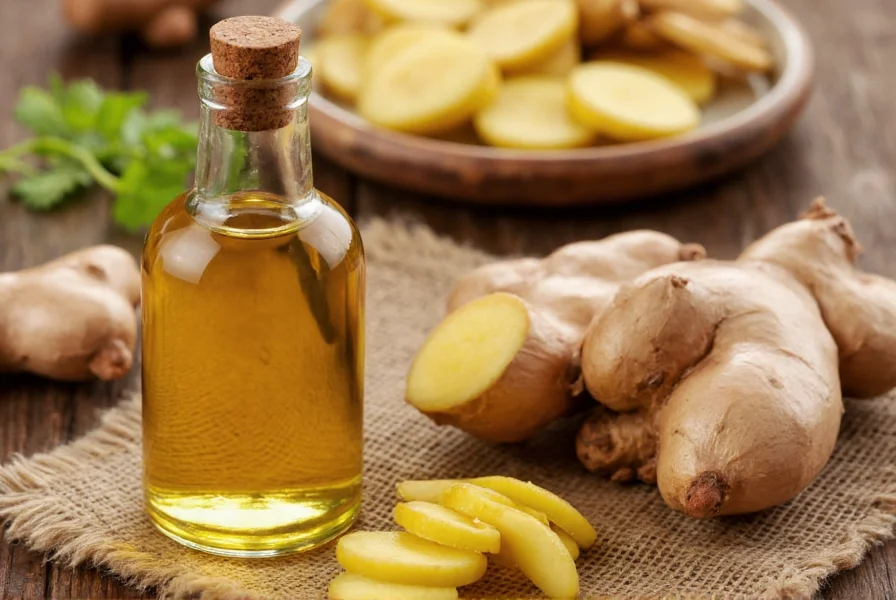When properly prepared and used, ginger and oil mixtures offer versatile solutions for everyday needs. This comprehensive guide explores evidence-based applications while addressing safety considerations and preparation methods.
Understanding Ginger and Oil Combinations
Ginger (Zingiber officinale) contains potent bioactive compounds, primarily gingerols and shogaols, which demonstrate antioxidant and anti-inflammatory properties according to multiple scientific studies. When combined with oils, these compounds become more readily extractable and usable for various applications.
The effectiveness of ginger and oil combinations depends on several factors:
- Type of ginger used (fresh, dried, or powdered)
- Oil selection and its extraction properties
- Preparation method and duration
- Intended application (culinary, topical, or household)
| Ginger Type | Best Oil Pairings | Optimal Applications |
|---|---|---|
| Fresh ginger root | Coconut, olive, sesame | Cooking, topical preparations |
| Dried ginger powder | Jojoba, almond, grapeseed | Skin applications, massage oils |
| Ginger essential oil | Carrier oils (2% dilution) | Aromatherapy, targeted topical use |
Culinary Applications of Ginger and Oil
Chefs and home cooks have utilized ginger and oil combinations for centuries to enhance flavor profiles and improve ingredient functionality. When ginger cooks in oil, its fat-soluble compounds become more bioavailable, creating richer flavor infusion than water-based methods.
Professional cooking techniques using ginger and oil include:
- Ginger-infused cooking oil: Gently heating sliced ginger in neutral oil creates versatile flavor base for stir-fries and sauces
- Tempering technique: Adding ginger to hot oil before other ingredients releases maximum flavor compounds
- Preservation method: Storing peeled ginger in oil extends freshness while creating ready-to-use flavored oil
For optimal culinary results when using ginger and oil, maintain temperatures below 350°F (177°C) to preserve ginger's delicate flavor compounds without burning.

Topical Applications and Safety Considerations
Many people explore ginger and oil combinations for topical applications, particularly for muscle discomfort and skin health. Research indicates that topical application of ginger extracts may support circulation and provide temporary relief from minor muscle discomfort.
When preparing ginger oil for skin application:
- Always dilute ginger essential oil to 1-2% concentration in carrier oil
- Perform patch test 24 hours before full application
- Avoid sensitive areas and broken skin
- Discontinue use if irritation occurs
For homemade ginger-infused oils intended for topical use, use the cold infusion method over 2-4 weeks rather than heat extraction to preserve more delicate compounds. Properly prepared ginger oil should have a warm, spicy aroma without any rancid notes.
Scientific Perspective on Ginger and Oil Benefits
Multiple peer-reviewed studies have examined ginger's bioactive compounds and their potential benefits. A 2022 review in Nutrients journal highlighted gingerol's antioxidant properties, while research published in Complementary Therapies in Medicine noted potential benefits for temporary relief of exercise-induced muscle discomfort when applied topically.
It's important to understand that:
- Ginger compounds are fat-soluble, making oil an effective extraction medium
- Most research examines concentrated ginger extracts rather than homemade preparations
- Topical ginger applications provide temporary, not curative, effects
- Individual responses to ginger vary significantly
While promising, current research doesn't support medical claims about ginger and oil curing specific conditions. The most evidence-supported applications relate to flavor enhancement in cooking and temporary relief of minor discomfort.
Creating Homemade Ginger Oil: Step-by-Step Guide
Preparing ginger oil at home requires attention to detail for optimal results and safety. The cold infusion method preserves more delicate compounds compared to heat-based extraction.
- Prepare ingredients: Use organic ginger root and high-quality carrier oil (olive, coconut, or almond)
- Clean and slice: Wash ginger thoroughly, peel if desired, and slice thinly (¼ inch)
- Dry ginger: Pat slices completely dry to prevent mold growth
- Fill container: Place ginger in clean glass jar, covering completely with oil
- Infuse: Store in dark place for 2-4 weeks, shaking gently daily
- Strain: Remove ginger pieces using fine mesh strainer
- Store: Keep in amber glass bottle away from light and heat
Properly prepared ginger oil maintains quality for 3-6 months when stored correctly. Discard if you notice cloudiness, separation that doesn't resolve with shaking, or any off odors.

Practical Applications Across Daily Life
Beyond cooking and topical uses, ginger and oil combinations serve multiple practical household purposes:
- Natural cleaning solution: Ginger-infused vinegar and oil creates effective surface cleaner
- Wood conditioner: Light ginger oil application can refresh wooden cutting boards
- Homemade remedies: Ginger oil in moderation may support temporary relief of minor discomfort
- Aromatherapy: Diffusing diluted ginger oil creates invigorating atmosphere
When incorporating ginger and oil into daily routines, start with small quantities to assess individual tolerance and preferences. The distinctive flavor and aroma profile works particularly well in Asian-inspired cuisine, marinades, and certain baked goods.
Important Safety Guidelines
While generally safe, ginger and oil applications require certain precautions:
- Never apply undiluted ginger essential oil directly to skin
- Discontinue use if skin irritation occurs
- Consult healthcare provider before using if pregnant, nursing, or taking medications
- Store ginger oil away from children and pets
- Use within recommended timeframe to prevent rancidity
Individuals with sensitive skin should perform patch tests before broader application. Those with known ginger allergies should avoid all ginger preparations. Proper storage in cool, dark conditions extends ginger oil's shelf life and maintains quality.
Conclusion
Ginger and oil combinations offer versatile applications across cooking, topical use, and household needs when prepared and used appropriately. Understanding the science behind ginger's bioactive compounds helps maximize benefits while maintaining realistic expectations. By following proper preparation methods and safety guidelines, you can effectively incorporate these natural combinations into daily life for flavor enhancement and practical applications.
Frequently Asked Questions
What's the best oil for making ginger-infused cooking oil?
Neutral-flavored oils with high smoke points work best for ginger-infused cooking oil. Avocado oil, grapeseed oil, and light olive oil maintain ginger's flavor profile without overpowering it. For Asian cuisine, sesame oil provides complementary flavor but has a lower smoke point. Always use refined rather than extra virgin oils for cooking applications to prevent burning.
How long does homemade ginger oil last before going bad?
Properly prepared and stored ginger oil typically remains fresh for 3-6 months. Store in an amber glass bottle away from light and heat sources. Signs of spoilage include cloudiness, separation that doesn't resolve with shaking, or any rancid or off odors. For maximum freshness, refrigeration extends shelf life to 6-8 months. Always check for spoilage indicators before each use.
Can I use ginger oil directly on my skin for muscle discomfort?
Never apply undiluted ginger oil directly to skin. For topical use, dilute ginger essential oil to 1-2% concentration in carrier oil (approximately 6-12 drops per ounce of carrier oil). Perform a patch test 24 hours before broader application. Discontinue use if any irritation occurs. Those with sensitive skin should use lower concentrations. Consult a healthcare provider before using if you have medical conditions or take medications.
What's the difference between ginger essential oil and homemade ginger-infused oil?
Ginger essential oil is highly concentrated through steam distillation, requiring significant dilution (1-2%) for safe use. Homemade ginger-infused oil contains lower concentrations of active compounds extracted through maceration. Essential oil provides stronger aroma and potency but requires careful handling, while homemade versions offer milder effects suitable for culinary and some topical applications without additional dilution.











 浙公网安备
33010002000092号
浙公网安备
33010002000092号 浙B2-20120091-4
浙B2-20120091-4